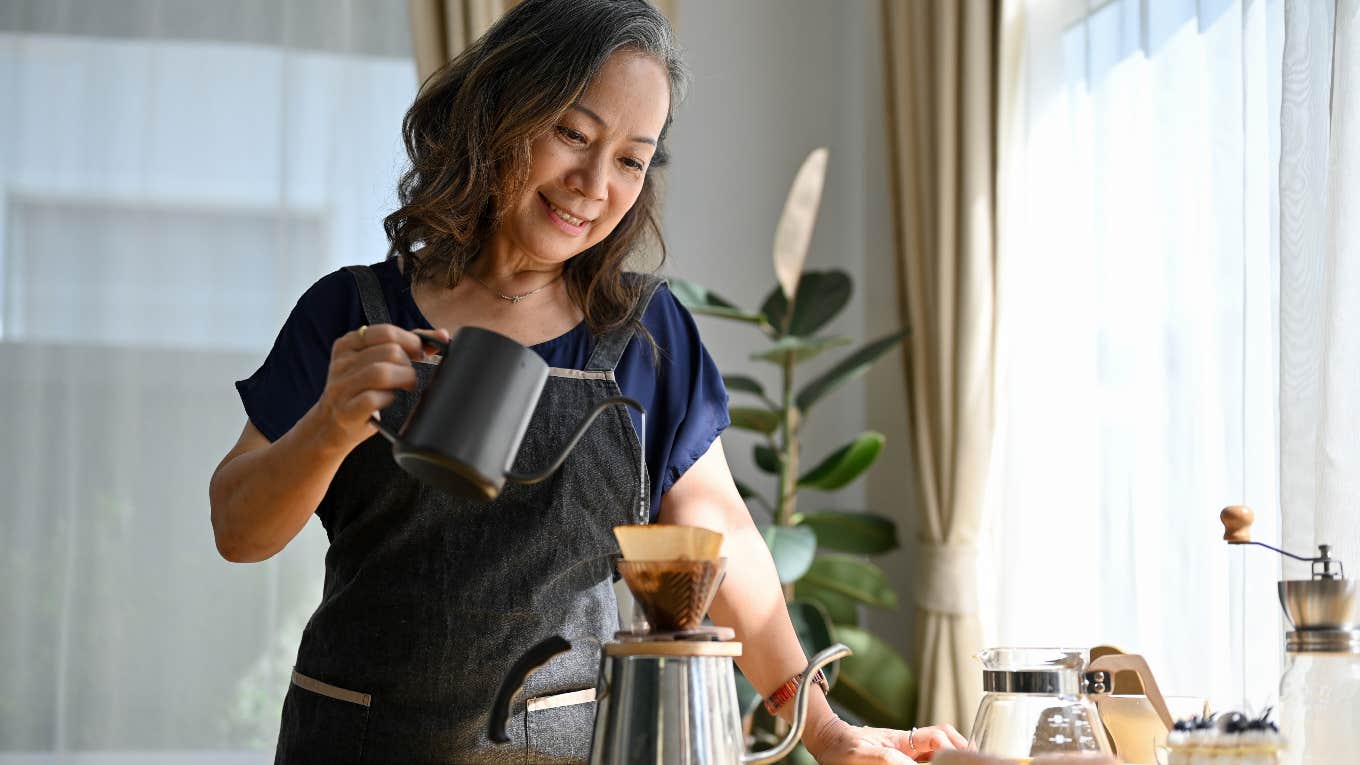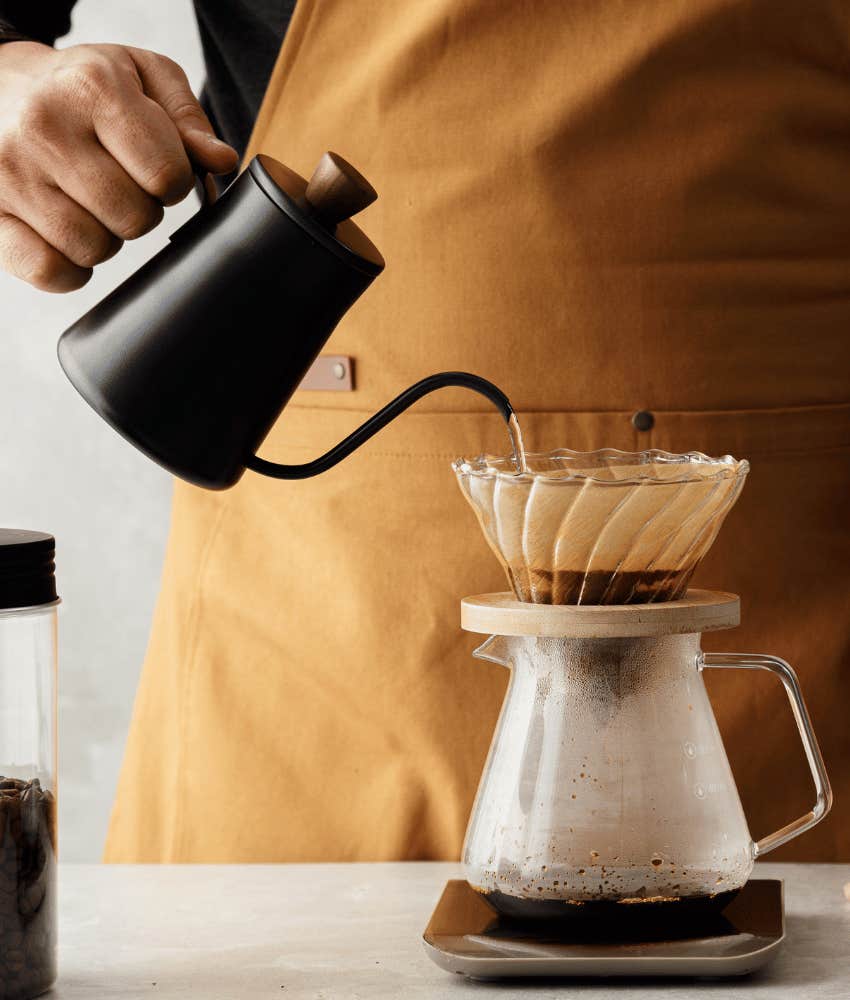Scientists Have Discovered How To Brew The Maximum Amount Of Coffee From The Fewest Number Of Beans
It turns out that the perfect coffee comes down to whatever "avalanche dynamics" is.
 BongkarnGraphic | Shutterstock
BongkarnGraphic | Shutterstock If you're like most people, you cannot live without coffee each morning, and afternoon, and maybe before bed. You're also probably sick and tired of how expensive coffee has become as of late.
Now that we live in a tariff nightmare, there's maybe not tons of hope on that front. Still, some scientists have at least discovered the most economical way to brew coffee, and the timing couldn't be better.
Scientists have discovered how to get the most coffee from the fewest beans.
As of this writing on April 9 (so this will likely be totally inaccurate by the time you read this), the President has decided, after days of blustering about his economic genius, to stand down on his catastrophic tariffs for 90 days because people, and I quote, "were getting a little bit yippy" about their 401(k)s and stock portfolios getting obliterated for no reason.
But! That at least means your morning coffee will not soar to $47 a cup because of tariffs on coffee-producing countries. Or at least they won't for the next 90 days.
Thanks to scientists at the University of Pennsylvania, however, we will have at least one feather in our cap when the President's next fit of pique arrives: We will know how to squeeze every last bit of coffee from every last coffee bean. It all comes down to physics.
Using fluid dynamics, the physicists determined a pour-over method that gets the most bang for your coffee buck.
Finally, scientists are using their power for something that actually matters instead of making rockets to shoot Katy Perry into space! (Leave her up there, please, if anyone in charge is reading this.)
I digress. The fluid dynamics experts, led by UPenn physicist Arnold Mathijssen, began pondering this issue while socializing at their lab's coffee area, which includes several different coffee apparatuses like an espresso machine, a French press, and a pour-over setup.
Mathijssen told USA Today that the pour-over is the favorite method of physicist Ernest Park, who began tinkering around with different methods. Before long, they were trying to figure out how to properly replicate this tinkering in an observable scientific experiment, so they could change the coffee game forever.
 SharkPaeCNX | Shutterstock
SharkPaeCNX | Shutterstock
They landed on a combination of silica gel particles, see-through coffee filters, lasers — yes, lasers — a high-speed camera, and custom-made computer code to film and analyze each moment of the pour-over process. Soon enough, they'd nailed it.
They landed on a five-step process involving water height and a coffee ground 'avalanche.'
After dozens of experiments, Mathijssen, Park and their colleagues had at last found the key to "the hydrodynamics of pour-over coffees, especially how a liquid jet interacts with a granular bed of submerged coffee grounds" — a series of words I recognize as English in nature but cannot make any sense of in this particular order and combination, so do not ask me.
However, it has something to do with the "avalanche dynamics" of coffee grounds, which sounds exciting, doesn't it? While I failed physics in high school, I'm pretty sure even I could handle the five tips the scientists' experiment yielded. Once you've placed your coffee grounds in your coffee filter, do the following:
- Pour boiling water over the grounds slowly. The slower the pour, the more coffee will be extracted from the grounds.
- But don't pour too slowly! Or you'll ruin it! Too slow and the water won't mix with the grounds, which will yield an inconsistent result.
- Here's where the avalanche comes in! Pour your water from a great height, for instance, while standing on the roof of your home. (Just kidding.) But height is what creates the "avalanche" effect in the grounds, so if you're the type who likes to get fancy and make those butler-like flourishes with your kettle, now's your chance.
- But don't pour from too high! Or you'll ruin it! Too much height or not enough speed will make the water stream break into droplets, and that will wreck the whole avalanche effect, and then you might as well just use your dumb Mr. Coffee from Walmart like an animal.
- Keep the water flow as thin as possible. You can do this with any kettle, but the scientists say a gooseneck kettle will be much easier, and as a bonus, it also looks very fancy.
Follow all those tips, and the "avalanche dynamics" will extract the maximum amount of coffee from those soon-to-be exorbitantly priced grounds, and you can sound like you actually understand physics while you explain it to your friends. It's a win-win. Tariff THAT, Mr. President.
John Sundholm is a writer, editor, and video personality with 20 years of experience in media and entertainment. He covers culture, mental health, and human interest topics.

